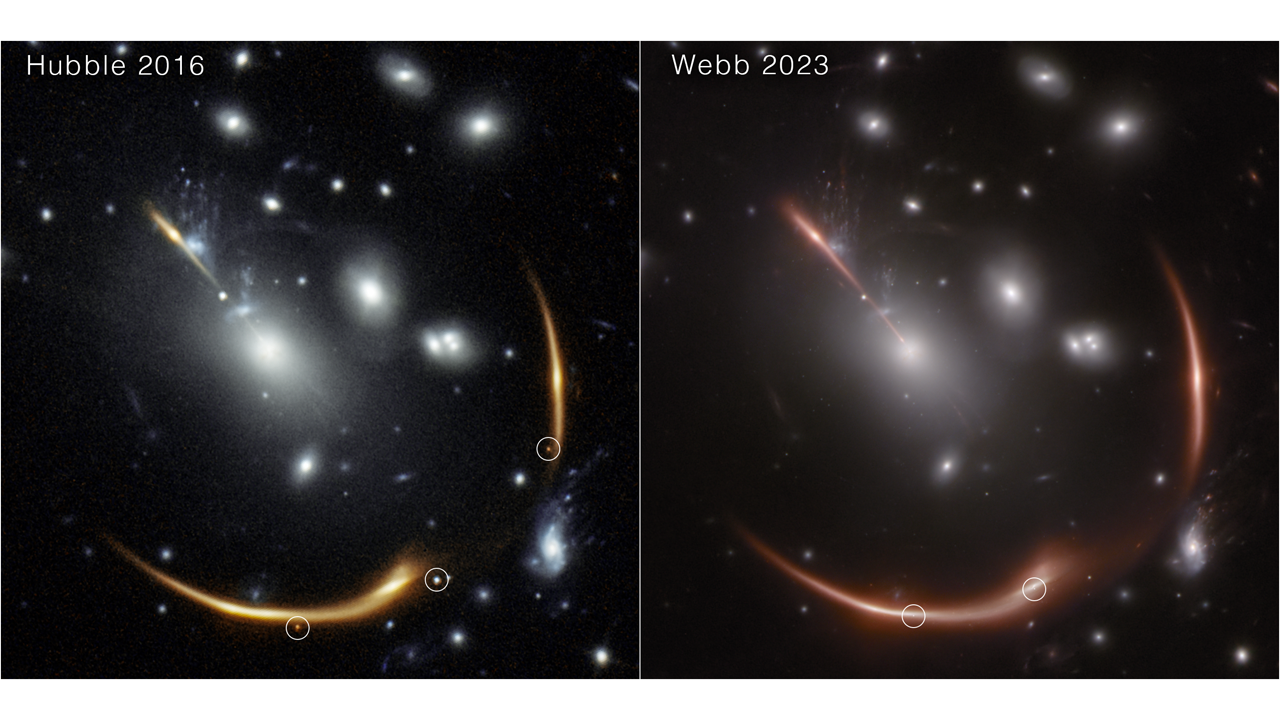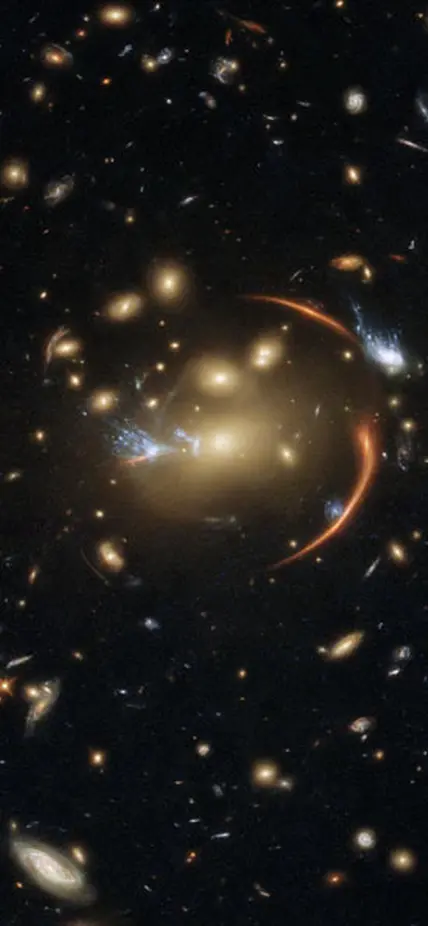Sometimes, what goes around comes back again thanks to an astrophysical phenomenon called gravitational lensing.
In 2016, Carnegie astronomer Andrew Newman used the Hubble Space Telescope to observe a very distant galaxy called MRG-M0138, which can be found about 10 billion light-years from us. Newman had discovered the remarkably bright galaxy using infrared images from Carnegie’s Magellan telescopes.
Despite its extreme distance, MRG-M0138 is accessible to Newman and other astronomers for detailed observations. This is due to a massive galaxy cluster called MACS J0138.0-2155 that is positioned between it and Earth in just such a way that its powerful gravity magnifies and warps our images of MRG-M0138. Newman compares this phenomenon, which is called gravitational lensing, to a natural telescope, boosting the power of human technology and giving astronomers a clearer look back in time.
It’s extremely rare for a very bright, very old galaxy like MRG-M0138 to exist in such a perfect position for lensing. So, in 2016 Newman was very excited about his observations and what they revealed about the differences between ancient and modern galaxies, one of the main themes of his research.
But a surprise was lurking in the Hubble images.
Three years later, another team of astronomers obtained new data revealing that Newman’s 2016 observation contained a supernova! These massive explosions represent the end of many stars’ lives, when they can briefly be as bright as an entire galaxy.
Thanks to the warping effect of MACS J0138.0-2155’s gravitational lensing, multiple images of the supernova, named Requiem, were produced, each taking a different path to Earth and arriving at different times. Astronomers predicted that the supernova was likely to reappear in 2037, marveling space lovers with the wonders of gravity’s power.
Fast forward to 2023.
Newman is the lead investigator on one of the first round of projects selected to use JWST—which launched in December 2021 and has been wowing space lovers the world over with its stunning images since July of the following year. His focus was once again on MRG-M0138, hoping to understand why unlike most other ancient galaxies, it stopped forming stars early in its life.
Guess what?
He caught another supernova in the act!
Thanks to a keen eye, he was able to work with Justin Pierel at the Space Telescope Science Institute to obtain urgent images that confirmed the new supernova, named Encore. Carnegie postdoc Meng Gu determined that Encore, like Requiem, is a particular type of supernova, Type Ia, used to measure cosmic distances, making these by far the most distant pair of such “sibling” supernovae ever observed within the same galaxy. Newman said that MRG-M0138 harbors so many stars that it might be a “supernova factory,” producing these violent explosions roughly every six years.
Although this research is still a work in progress, STScI, which operates JWST, published a post on its Webb-focused blog from Newman and Pierel detailing their excitement about the find.
Pierel, Newman, and collaborators are now using JWST to time the appearance of Encore in the various images produced by the gravitational lensing effect. Although supernova explosions are normally unpredictable, in this case the final appearance of Encore can be predicted: the last hurrah will occur around 2035. Timing Encore over 12 years will provide a precise new measurement of the rate at which the universe is expanding—called the Hubble constant after legendary Carnegie astronomer Edwin Hubble—one of the major challenges in cosmology today.

